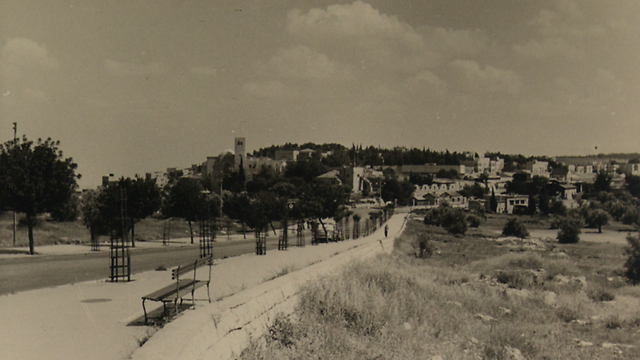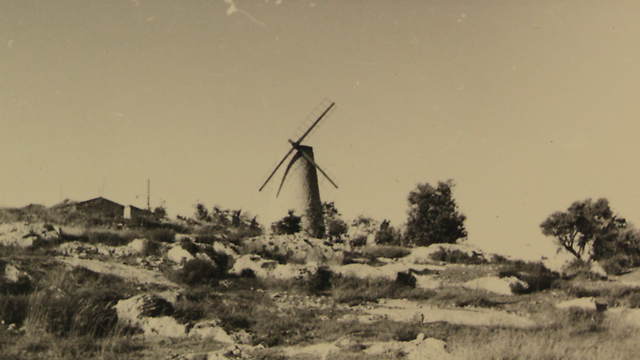
Rare photos of divided Jerusalem resurface after 60 years
IN PICTURES: Seen here for the first time since their original publication in 1955, a treasure trove of pictures show a city still recuperating from war.
A Belgian named Christian David Rom contacted the National Library in Jerusalem several months ago with the surprising news of the album's existence. His late father, Jacques, was a journalist sent to Jerusalem for three weeks in the 1950s to cover the Israeli-Arab conflict.
The photographs are seen here for the first time in six decades to mark this year's Jerusalem Day.
Jacques Rom visited Israel on June 14-July 5, 1955 on an assignment for Belgian newspaper La Libre Belgique. "It's a Catholic newspaper and Jacques saw his assignment as not only journalistic work, but also as a religious matter," said Gil Weissblei, director of the National Library. "He visited the holy sites and shared his religious experience with readers."
The Jerusalem visit resulted in a series of articles titled "Holy Land – Conflicted Land". The historic photographs are a unique look at Jerusalem from both sides of the border. The Jerusalem of 1955 had recuperated from the war of 1948, but consequences of the fighting were still apparent.
Jerusalem was poor and divided by fences and checkpoints. But Jews and Arabs alike greeted Rom with open arms in the hopes of sympathetic coverage, which allowed the journalist to gain access to locations that were closed to the general public.
Of course, the photographs show a city much different from today. The Mamilla neighborhood, now a bustling and crowded area, was then a neglected no man's land riddled with checkpoints, barbed wire, and soldiers guarding the border between the eastern and western parts of the city. What is today the western neighborhood of Givat Shmuel was then a desolate quarry.
Several photographs were taken at Mount Zion, which was then the Israeli-controlled place closest to the Temple Mount.
At some point Rom crossed the border to the eastern part of the city, which was under Jordanian control. Wessblei says that apart from the Old City, the pictures show that the eastern half was relatively less populated, and many depict small villages and open fields.
The Jordanians took Rom to see the refugee camps created after the 1948 war.
Weissblei said it is apparent that Rom was not particularly sympathetic towards Israel when it came to the question of refugees. "United Nations staff also took Rom to tour the refugee camps, with the goal of showing him the suffering sustained by the Arabs in the war," he said. "However, Rom's notes show that the number of refugees presented to him by the Arabs and the UN was much smaller than the numbers claimed by those same bodies today."
The refugee issue is also visible in the western part of the city. Some pictures show the Arab village of Lifta, which was abandoned in 1948. Another photo shows destroyed houses in Ein Karem, today one of the most high-end neighborhoods in the city.
Correction: The original version of this article incorrectly spelled Christian David Rom's last name as "Rohm".













